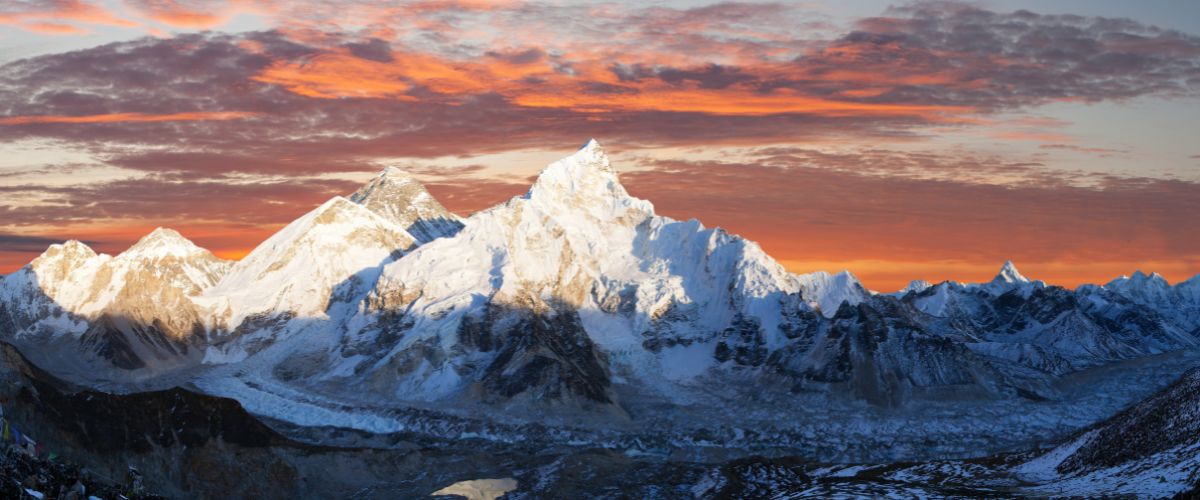
Top 10 Highest Mountains in the World

Top 10 Highest Mountains in the World
swotah travel
9741
02, 01 2023
Mountain peaks are some of the natural world's most majestic and breathtaking features. These towering giants rise above the surrounding landscape, offering stunning views and a sense of adventure to those who dare to climb them. From the Alps range to the rugged summits of the Rocky Mountains, mountain peaks can be found worldwide, each with unique character and challenges. Whether you are an experienced climber or enjoy the beauty of nature from afar, the majesty of mountain peaks is sure to inspire awe.
We have prepared the top 10 highest mountains in the world, of which eight are in Nepal. Let's dive into the overview of the tallest peaks in the world.
1. Mount Everest, Nepal/Tibet - 8,848 Meters (29,029 feet)
Mount Everest is the world's tallest mountain, with an elevation of 8,848 meters (29,029 feet). Situated in the Himalayas on the border between Nepal and Tibet, the mountain sits in the Mahalangur Himal sub-range. It is the highest peak in the Earth's land mass above sea level.
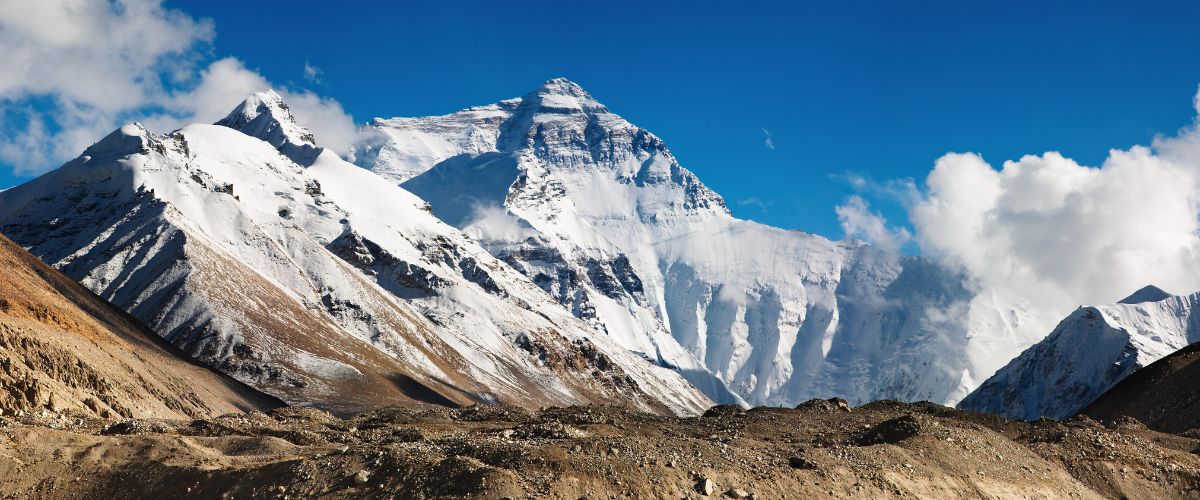
Photo: Mount Everest
Everest is known for its extremely harsh and unforgiving weather conditions, which have claimed the lives of many climbers over the years. Despite the challenges, thousands worldwide attempt to climb the mountain each year, drawn by the thrill of standing on the world's roof. The first ascent to the peak was done by two senior mountaineers, Sir Edmund Hillary and Tenzing Norgay Sherpa, in 1953.
Since then, hundreds of people have reached the summit, but many more have died trying. The route to the summit of Everest is dangerous and requires a high level of skill, physical fitness, and endurance. Everest is also known for its unique and fragile ecosystem, including species found nowhere else on Earth. The mountain is home to several rare and endangered animals, such as the snow leopard and the Himalayan tahr.
2. K2, Pakistan/China - 8,611 Meters (28,251 feet)
Mount K2 is also known as Chhogori - the second-tallest peak, with a height of 8,611 meters (28,251 feet). The mountain sits in the Karakoram mountain range in the Gilgit-Baltistan region of Pakistan, near the border with China.
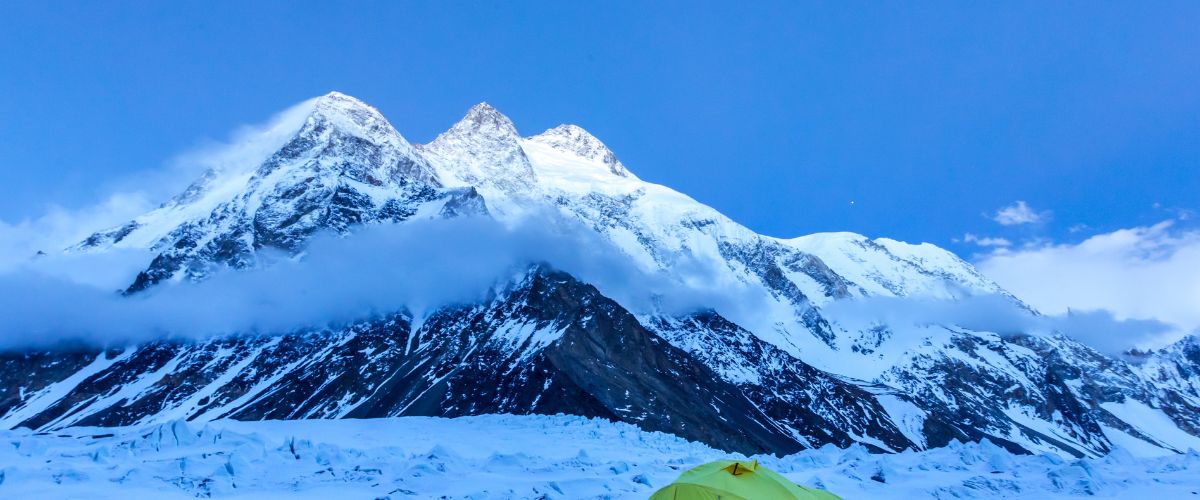
Photo: Mount K2
As K2 has its steep and treacherous terrain and extreme weather conditions, it is considered one of the most formidable mountains to climb in the world. It is known as the "Savage Mountain" because of the high number of deaths on its slopes. Despite these challenges, K2 has a strong allure for experienced mountaineers, and many have attempted to reach its summit.
An Italian team made the first successful ascent of K2 in 1954. Since then, over 400 climbers have reached the summit, but many more have died trying. In recent years, the number of people attempting to climb K2 has increased, with some teams using modern technology and techniques to improve their chances of success.
The mountain is located in the Karakoram mountain range, which is home to many other high peaks, including K3 (Gasherbrum II), K4 (Broad Peak), and K5 (Masherbrum). The area is known for its stunning natural beauty and is popular with trekkers, hikers, and mountaineers.
3. Kangchenjunga, Nepal/India - 8,586 Meters (28,169 feet)
Mount Kangchenjunga is the third-highest mountain in the world. It stands at 8,586 meters and is located on the border between Nepal and India.
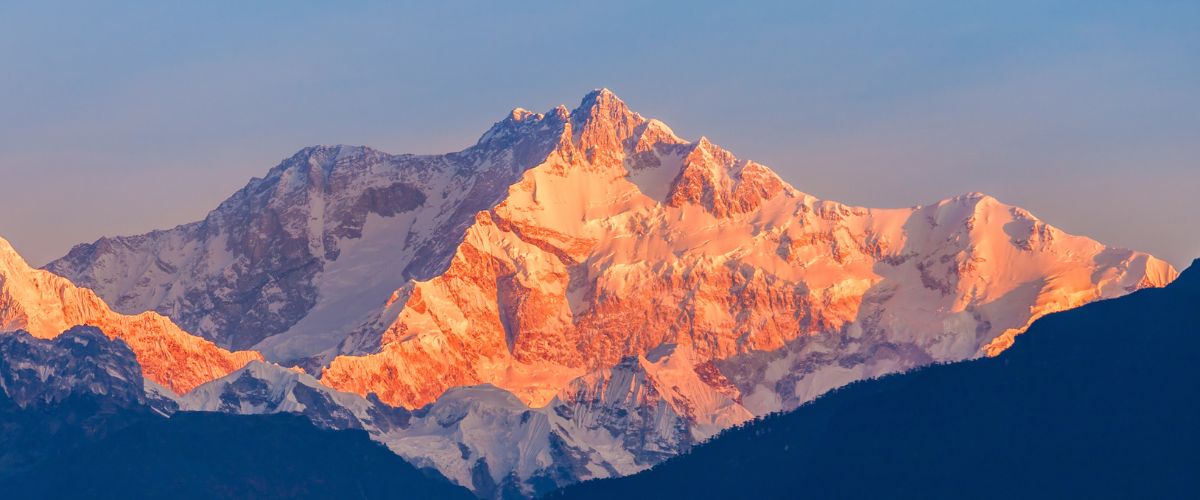
Photo: Mount Kangchenjunga
The mountain is part of the Kangchenjunga Himalayan range, including several other peaks over 7,000 meters (23,000 feet) in elevation. Kangchenjunga is a famous mountain for climbing, and the first successful ascent was made in 1955 by a British expedition led by Joe Brown and George Band. However, it remains one of the less-frequented peaks in the Himalayas due partly to its remote location and difficulty. The mountain is sacred to both the Nepali and Sikkimese people, so the summit of Kangchenjunga has never been fully climbed.
According to tradition, it is forbidden to set foot on the highest point of the mountain, and all expeditions to the summit have stopped short of the actual peak out of respect for local beliefs.
Despite its remote location and challenging terrain, Kangchenjunga is home to diverse flora and fauna, including rare birds, mammals, and insects. The mountain is also an essential water source for the surrounding region, with several large glaciers feeding into nearby rivers and streams.
4. Lhotse, Nepal - 8,516 Meters (27,940 feet)
Mount Lhotse is the fourth-highest mountain in the world, standing at an elevation of 8,516 meters (27,940 feet) above sea level. It is located on the border between Nepal and Tibet and is part of the same massif as Mount Everest.
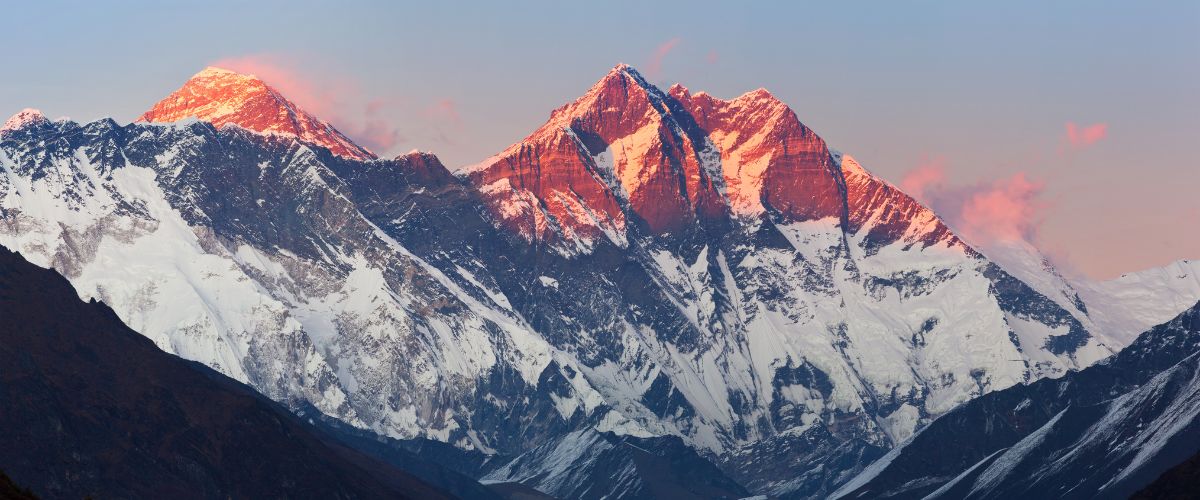
Photo: Mount Lhotse
Mount Lhotse has three prominent peaks: the main summit, Lhotse Middle (East) at 8,414 meters (27,605 feet), and Lhotse Shar at 8,383 meters (27,503 feet). A Swiss team first climbed the mountain in 1956.
The climbing route to Mount Lhotse follows the same route as the one used to climb Mount Everest, up to the South Col. From there; climbers must traverse the Lhotse Face, a steep and glaciated slope, before reaching the summit. The Lhotse Face is known for its technical difficulty and is considered one of the most challenging parts of the climb.
Climbing Mount Lhotse is a physically and mentally demanding endeavor that requires a high level of technical skill, physical fitness, and endurance. Experienced mountaineers only attempt it, and even with proper training and preparation, the climb can be dangerous due to the extreme altitude, harsh weather conditions, and the risk of avalanches and other hazards.
5. Makalu, Nepal - 8,485 Meters (27,838 feet)
Mount Makalu has an elevation of 8,485 meters (27,838 feet) above sea level. It is located on the border between Nepal and China, approximately 20 miles (32 kilometers) southeast of Mount Everest.
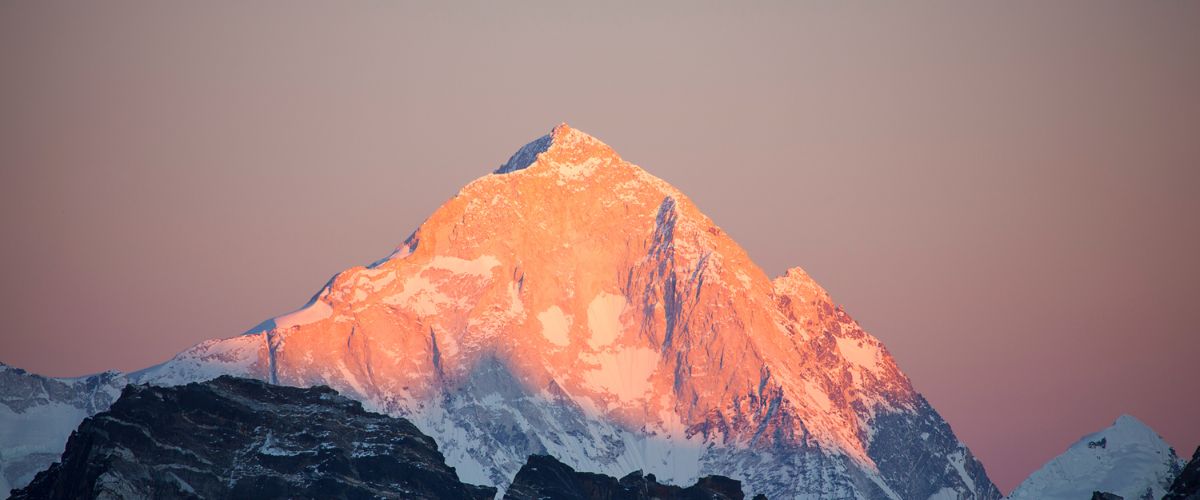
Photo: Mount Makalu
Makalu is an isolated peak with four sharp ridges that form a pyramid shape. It has a complex structure, with several subsidiary peaks and several glaciers. The mountain's main peak is on the border between Nepal and China. It is separated from the nearby peaks of Chomo Lonzo and Kangchungtse by the Makalu-Barun Valley.
Makalu was first climbed in 1955 by a French team led by Jean Couzy and Lionel Terray. The standard route to the summit follows the northwest ridge, which involves technical climbing at high altitudes. The mountain is considered one of the more complicated 8000m peaks to climb due to its steep and exposed ridges, and it is less popular with climbers than some of the other 8000m peaks in the region.
Makalu is located in a protected area known as the Makalu-Barun National Park and Conservation Area, which is home to a wide variety of flora and fauna, including the endangered red panda and the Himalayan black bear. The area is also home to several small villages, and the locals depend on the mountain for their livelihoods and spiritual practices.
6. Cho Oyu, Nepal/Tibet - 8,188 Meters (26,864 feet)
Mount Cho Oyu is the sixth-highest mountain in the world, with an elevation of 8,188 meters (26,864 feet) above sea level. It is located on the border between Nepal and Tibet and is considered one of the most accessible 8,000-meter peaks.
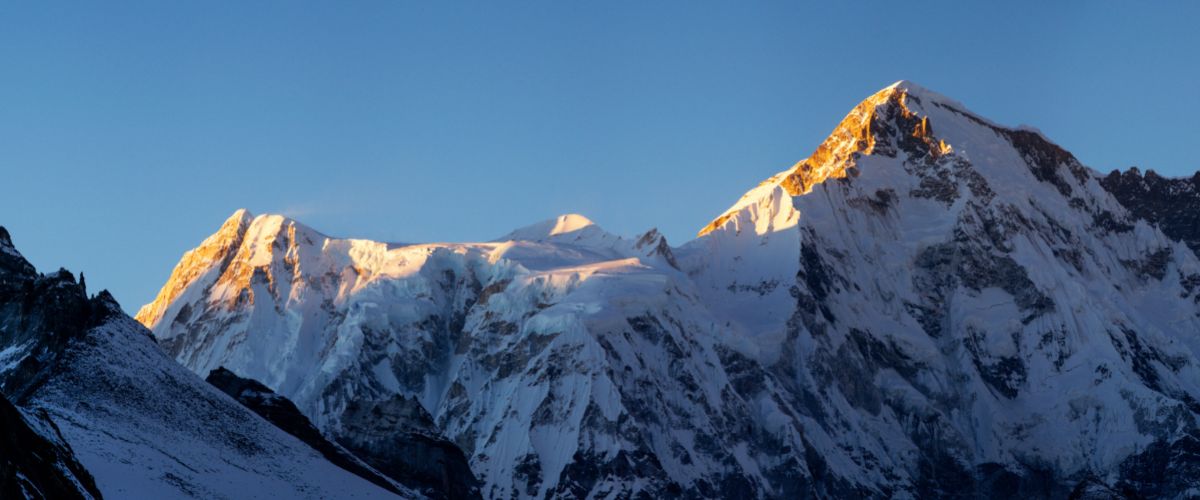
Photo: Mount Cho Oyu
Herbert Tichy, Sepp Mayerl, and Pasang Dawa Lama in 1954 first climbed the mountain. Since then, it has become a popular destination for mountaineers and trekkers, with many routes to the summit.
The mountain is covered in snow and ice for much of the year, and climbing requires a high level of physical fitness, technical climbing skills, and proper equipment. Spring and fall seasons have stable weather making it convenient to summit Cho Oyu.
There are several base camps used by climbers on Cho Oyu, including a high-altitude center at around 6,400 meters (21,000 feet). From here, climbers make their final push to the summit, typically starting in the early morning to avoid the risk of avalanches and to take advantage of the cooler temperatures.
Climbing Cho Oyu can be a challenging and rewarding experience, offering stunning views of the surrounding mountains and a sense of accomplishment for those who reach the summit. However, it is essential to be well-prepared and to take the necessary safety precautions when climbing at such high altitudes.
7. Dhaulagiri, Nepal - 8,167 Meters (26,795 feet)
Mount Dhaulagiri is the seventh-highest mountain in the world, with an elevation of 8,167 meters (26,795 feet) above sea level. It sits in the Dhaulagiri Himal range in the northwest region of Nepal, near the border with Tibet. The mountain is known for its sheer, steep north face, which rises 4,000 meters (13,123 feet) above the Kali Gandaki Gorge, making it one of the highest mountain walls in the world.
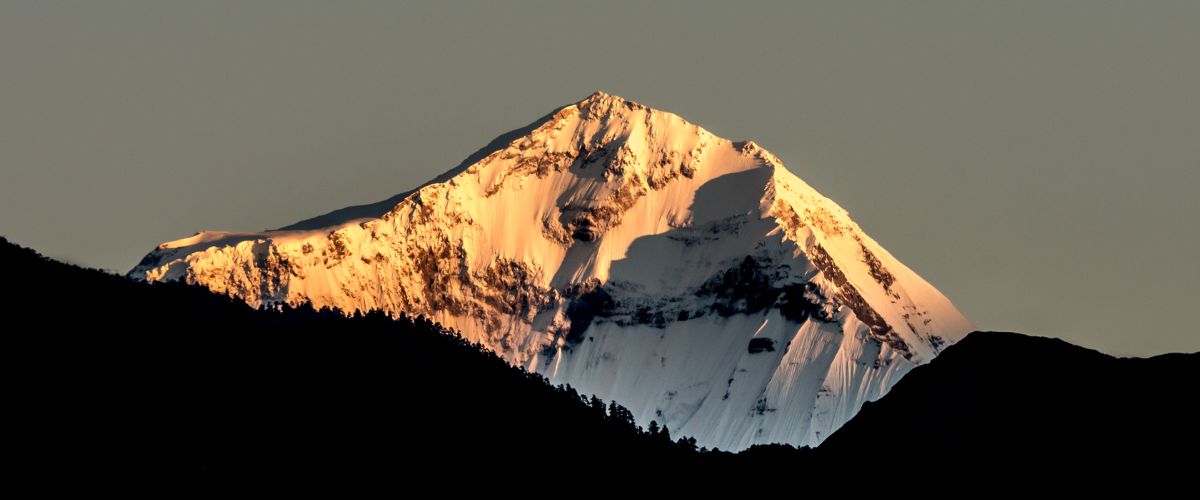
Photo: Mount Dhaulagiri
Dhaulagiri was first climbed in 1960 by a Swiss-Austrian expedition led by Max Eiselin. The team followed the southeast ridge to the summit, the most commonly used route today. However, the mountain has also been climbed via its north and northwest faces, and several other challenging courses have yet to be successfully ascended.
Dhaulagiri is a popular destination for experienced mountaineers. Still, it is also considered a technically challenging and dangerous mountain due to its high altitude, extreme weather conditions, and avalanche hazards. As with all high-altitude mountain climbing, proper training, acclimatization, and equipment are essential for a successful and safe ascent of Dhaulagiri.
Also Read: Best Peak Climbing Season In Nepal
8. Manaslu, Nepal - 8,163 Meters (26,781 feet)
Mount Manaslu stands at 8,163 meters (26,781 feet) above sea level. It is located in the Himalayas of Nepal, on the border with Tibet. The mountain was first climbed in 1956 by a Japanese expedition, and it is now a popular destination for mountaineers and trekkers.
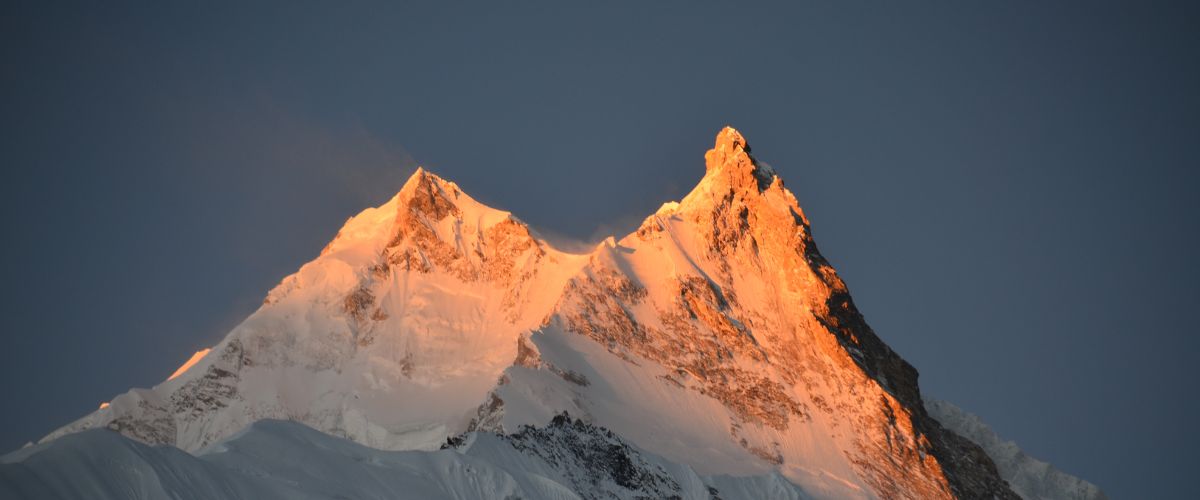
Photo: Mount Manaslu
The mountain has a pyramidal shape with several steep ridges and faces. The north face is particularly steep and presents a technical challenge for climbers. The mountain is prone to avalanches and has a high risk of altitude sickness, so it is essential for climbers to be well-prepared and acclimatized before attempting to reach the summit.
There are several routes to the summit of Mount Manaslu, but the most common way is the north face, which involves crossing the Larkya La Pass. Manaslu Base Camp trek is a popular route for trekkers. You are never away from the stunning views of the mountain and the surrounding landscape, as well as an opportunity to experience the local Gurung people's culture and way of life.
Despite its popularity and the increasing number of tourists visiting the area, the mountain and its surroundings remain relatively pristine and unspoiled, making it an ideal destination for many travelers.
9. Nanga Parbat, Pakistan - 8,126 Meters (26,660 feet)
Nanga Parbat is at a height of 8,126 meters (26,660 feet) above sea level. It is located in the Diamer District of the Gilgit-Baltistan region in Pakistan.
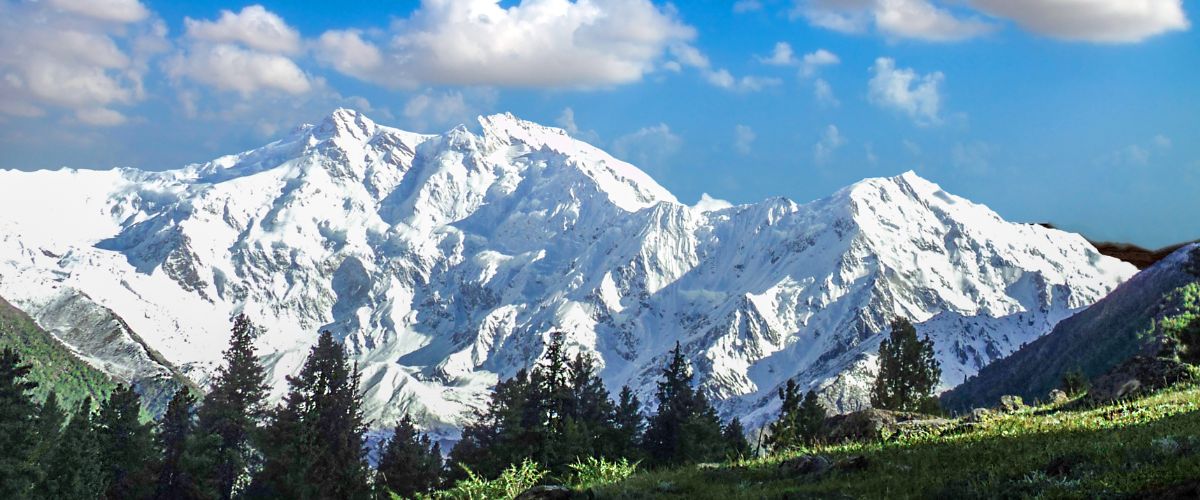
Photo: Nanga Parbat
Nanga Parbat is known for its steep and challenging climbing routes and is considered the deadliest mountain in the world. It has been the site of numerous climbing accidents and fatalities. The mountain's name, "Naked Mountain," in Urdu, reflects its stark and exposed appearance.
Nanga Parbat has several different climbing routes, including the Rakhiot Flank, the Diamir Face, and the Rupal Face. The Rupal Face is the highest mountain face in the world, rising almost 4,600 meters (15,000 feet) from its base.
Despite its formidable reputation, many experienced mountaineers have also successfully climbed Nanga Parbat. The first ascent was made in 1953 by an Austrian-German expedition led by Hermann Buhl.
10. Annapurna, Nepal - 8,091 Meters (26,545 feet)
Annapurna, the 10th highest mountain, sits at an altitude of 8,091 meters above sea level. It is located in the Himalayas of north-central Nepal and is part of the Annapurna mountain range.
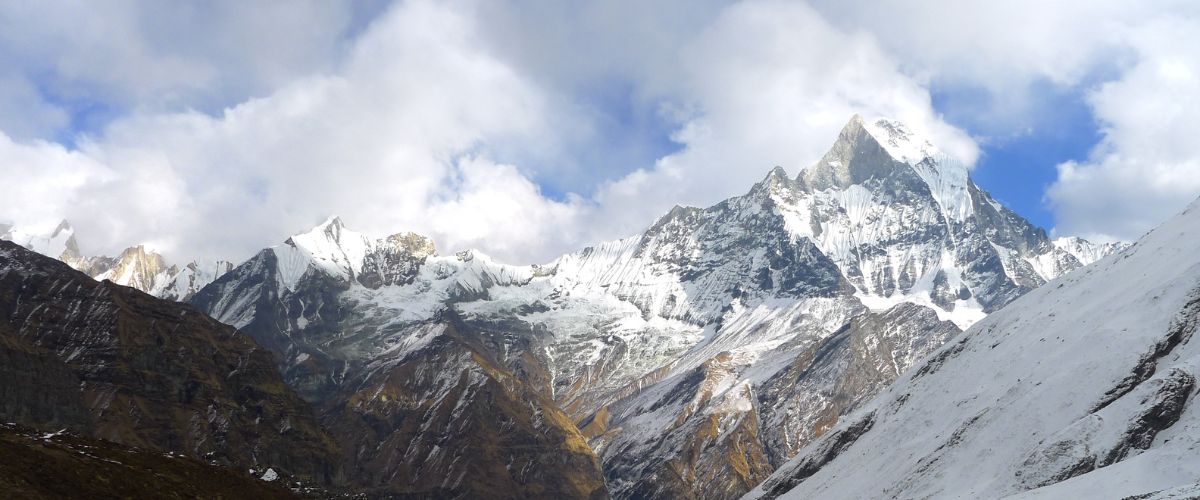
Photo: Annapurna I
Annapurna is a Sanskrit name that means "full of food" or "never hungry" and is named after the Hindu goddess Annapurna, the goddess of agriculture and nourishment. Annapurna is considered one of the most challenging and dangerous mountains due to its steep and exposed slopes and the high risk of avalanches and other natural disasters.
The first successful ascent of Annapurna was made by French climbers Maurice Herzog and Louis Lachenal in 1950, but the climb resulted in the loss of several fingers and toes due to frostbite. Despite the challenges, Annapurna remains a popular destination for mountain climbers and has been climbed by thousands since its first ascent. The mountain is also an important cultural and spiritual site for the people of Nepal and is revered as a sacred place by Hindus and Buddhists.
NEWSLETTER SIGNUP
Sign up to receive our trip ideas and travel offers!
Get updates and Exclusive Offers up to 20% Discount








